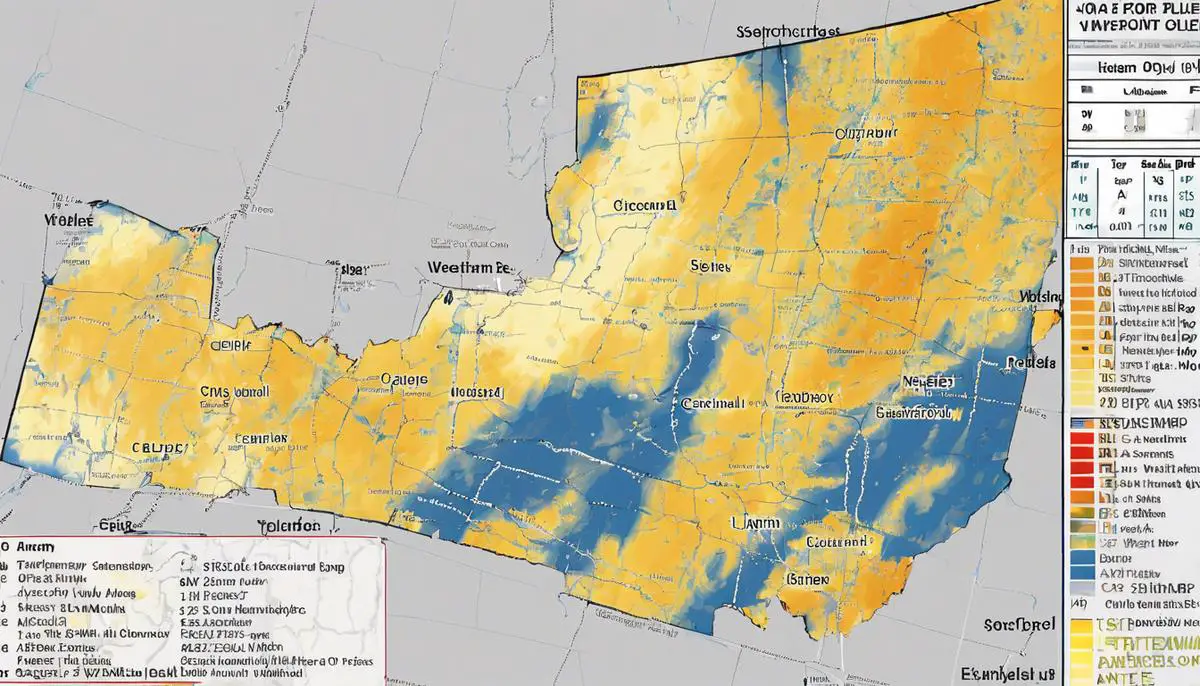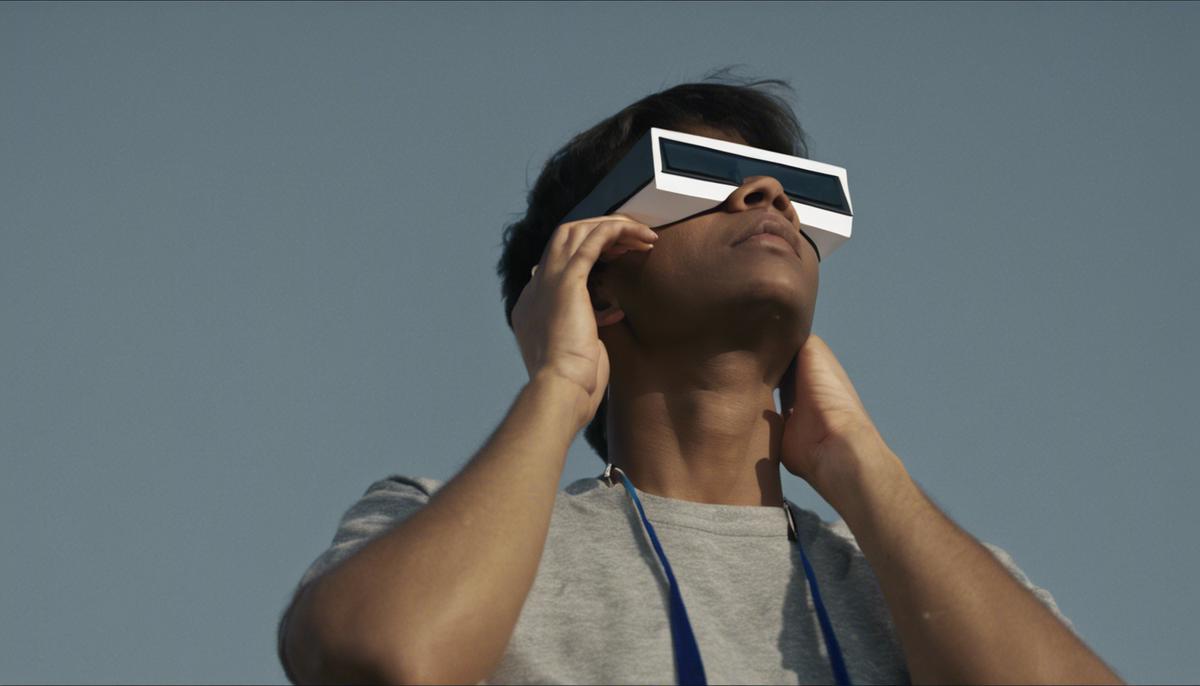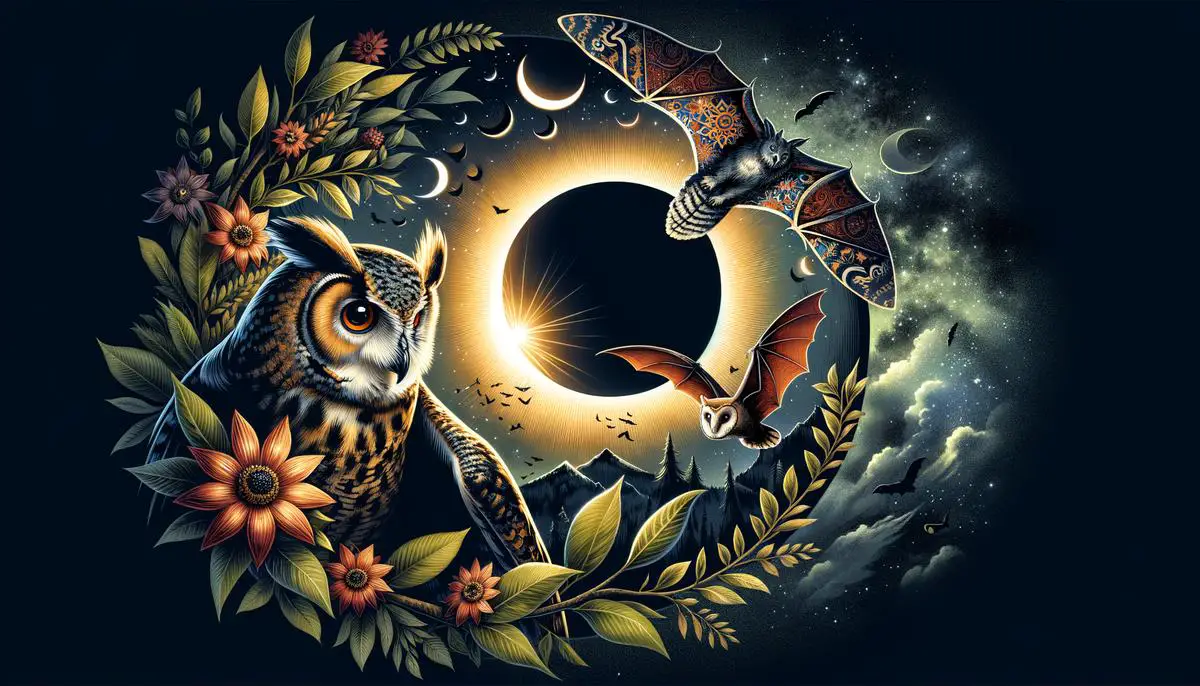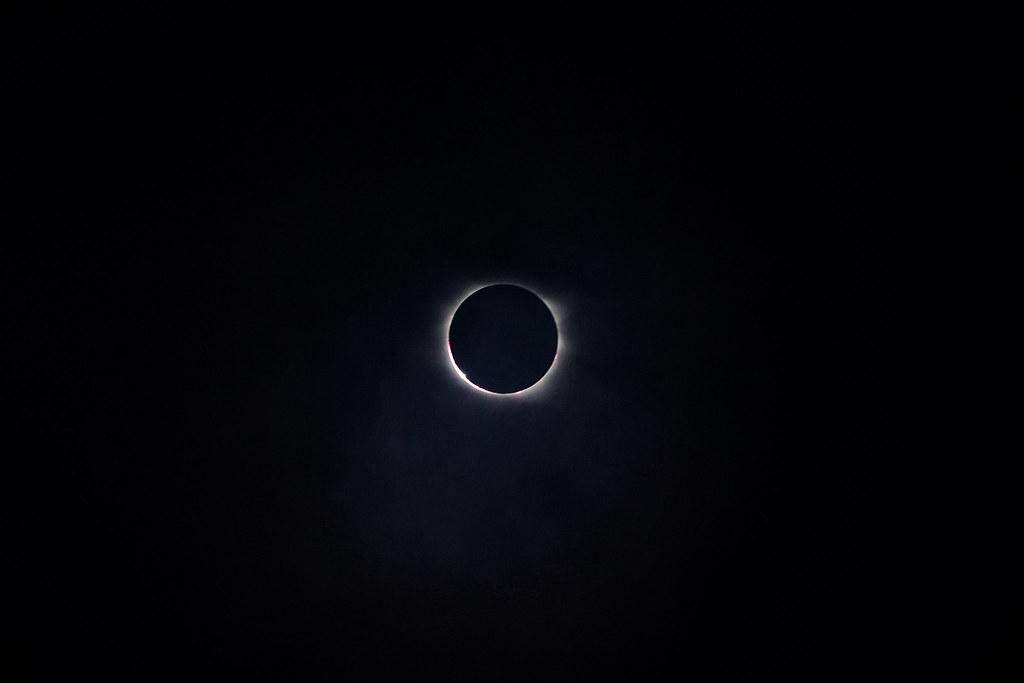Best Viewing Locations
As anticipation builds for the April 8 total solar eclipse, a celestial event that promises to enchant millions across North America, the crucial question on every eager viewer's mind concerns the optimal spots for experiencing this astronomical spectacle. Guided by the latest meteorological forecasts, northern New England and a swath from southern Missouri to central Indiana emerge as prime locations, promising clearer skies. Particularly, Vermont and upstate New York have received optimistic weather reports, assuring mostly sunny conditions – a boon for eclipse enthusiasts.
By contrast, Texas, initially a favored viewing destination for its usually sunny disposition, faces the prospect of widespread cloud cover that may obscure the eclipse's visibility, underscoring the capricious nature of eclipse-day weather.
For individuals planning to witness the eclipse, this dispersion of weather patterns emphasizes the importance of flexibility and readiness to adjust plans according to the latest atmospheric insights. In regions like Ohio and parts of New York, where clouds may cast uncertainty, holding on to a glimmer of hope for breaks in the overcast sky becomes part of the eclipse-watching adventure. With predictions highlighting a mix of potential viewing conditions across the continent, the allure of witnessing the moon's shadow obscuring the sun binds communities in a shared moment of celestial awe. The blend of anticipation and the unpredictability of weather patterns adds an extra layer of excitement to the solar eclipse, compelling viewers to gaze skyward, hoping for a clear spectacle that bridges science and collective wonder.
Preparation, informed by the most current weather forecasts, stands as the bedrock of a memorable eclipse experience. Enthusiasts are encouraged to monitor evolving weather models and adjust their viewing plans accordingly, be it migrating toward forecasted clear-skies areas or staying attuned to fleeting opportunities for visibility amid partial cloudiness.
Cloud Cover Predictions
As enthusiasts and onlookers fine-tune their eclipse day strategies, cloud cover plays a crucial role in visibility, dictating the quality of the astronomical experience. In this intricate dance between Earth, Moon, and Sun, the whims of weather patterns hold the power to shape one's encounter. A recent analysis suggests a veil of uncertainty over specific areas, notably within Texas, where ambitious spectators might face a challenge against gathering clouds. Contrary to Texas' usual clear skies, cloudiness is expected to envelop the state, potentially obscuring the eclipse's grandeur, leaving many to reconsider their viewing spots. The rhythm of the forecast calls for an agile approach, ready to pivot as the sky dictates.
Meanwhile, a subtle optimism weaves through the more northern passages along the eclipse's trajectory. The sturdy backbone of high-pressure systems over parts of New England hints at expanses of clear skies. Here, eagerness intertwines with nature's unpredictability, reminding viewers that the spectacle above is as much an orchestration of cosmic alignment as it is an interplay with Earth's temperamental atmospheres. Yet, the plot thickens towards the Northeast, with possible cloud intrusions casting shades of doubt among vigilant sky gazers. It's a narrative rife with anticipation, each update scrutinized for the slightest sign of nature bending towards favorability.
Despite challenges posed by less-than-ideal weather predictions in certain sectors, the allure of witnessing sunlight dim during midday spurs a collective resolve. Diverse segments from across the country parse through detailed meteorological insights—in search of those cherished pockets of clarity amid a tapestry of potential cloud cover. This skyward vigil underscores a shared journey—a testament to humankind's enduring fascination with celestial marvels.

Eclipse Safety and Viewing Tips
As the anticipation for the April 8 total solar eclipse builds, it's crucial to remember the importance of safe viewing practices to protect your eyes. When the day finally arrives, and the moon takes its place between the Earth and the sun, eclipses create a magnificent spectacle that can only be safely enjoyed with the aid of proper eclipse glasses. These glasses, specifically designed to filter out the harmful rays of the sun, are your gatekeepers to witnessing the awe-inspiring moments without risking visual impairment. As millions prepare to tilt their heads skyward, obtaining these glasses ahead of time is paramount; they're not only a ticket to a safe viewing experience but also a necessity for capturing the eclipse in all its glory without causing temporary or permanent damage to your eyesight.
Further enriching this celestial event, driving during the eclipse presents its own set of challenges and opportunities. Agencies continually advise against operating vehicles with eclipse glasses on—given their non-transparency to normal light, they're a road hazard. If you find yourself on the road during the event, the best course of action is to pull over at a safe location to witness this natural phenomenon. Remember, sudden darkness can also affect wildlife behavior, adding an unpredictable element to road conditions. Observing the eclipse from the safety of a stationary viewpoint not only ensures your safety but also allows you to fully immerse in the experience, making it more memorable. The echoing hoots of owls or the rare sight of day-active animals winding down, mistaking the eclipse-induced twilight for dusk, adds a unique touch to the whole experience, intertwining terrestrial life with the celestial dance above.

Impact of Weather on Wildlife Behavior
As the April 8 total solar eclipse draws near, with its promise to cast major parts of the U.S. into an eerie midday twilight, the anticipation of observable changes in wildlife behavior grows. Animals, inherently tuned to the rhythmic patterns of daylight and darkness, may exhibit peculiar reactions as they suddenly find themselves enveloped in darkness. Historical accounts and anecdotal evidence from previous eclipses suggest a broad array of wildlife responses, ranging from birds ceasing their daytime songs to nocturnal animals awakening, confused by the premature return of night. This extraordinary event provides a unique opportunity for both scientists and casual observers to study and marvel at the natural world's response to what is, essentially, a celestial anomaly.
Researchers have noted that during an eclipse, some animals might display behaviors typically reserved for twilight or nighttime. For example:
- Owls may begin hooting, vividly demonstrating their instinctual link to darkness
- Diurnal animals might make their way to resting places, preparing for what they perceive as the oncoming night
- The sudden reduction in light can disrupt the activities of creatures ranging from tiny insects to large mammals
The eclipse presents a natural laboratory for observations that could enhance our understanding of biological rhythms and behavior patterns. Moreover, as the moon's shadow glides across the earth, casting varied intensities of darkness over different regions, the gradient of animal behaviors observed might offer insights into how light levels influence daily activities in the animal kingdom. Even as the darkness of totality passes briefly, and the sun's light begins to once again dominate the sky, observing how quickly wildlife resumes its daily routines could provide fascinating glimpses into the adaptability and resilience of nature's inhabitants.

- Nemiroff R, Bonnell J. Astronomy Picture of the Day. NASA. https://apod.nasa.gov/apod/astropix.html
- Espenak F. Eye Safety During Solar Eclipses. NASA Eclipse Web Site. https://eclipse.gsfc.nasa.gov/SEhelp/safety.html
- Kavanagh J. Eclipse: Journeys to the Dark Side of the Moon. Oxford University Press; 2017.
![]()
